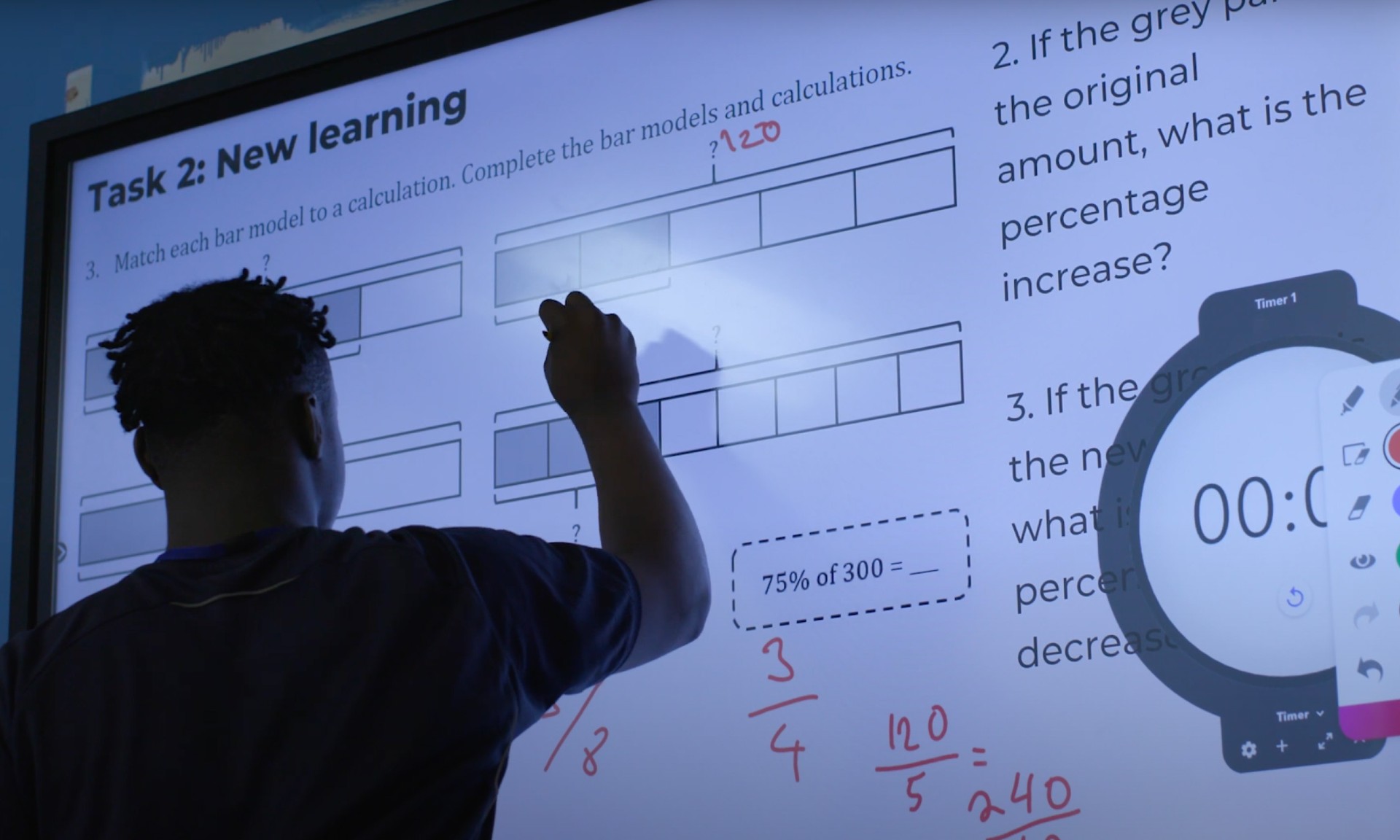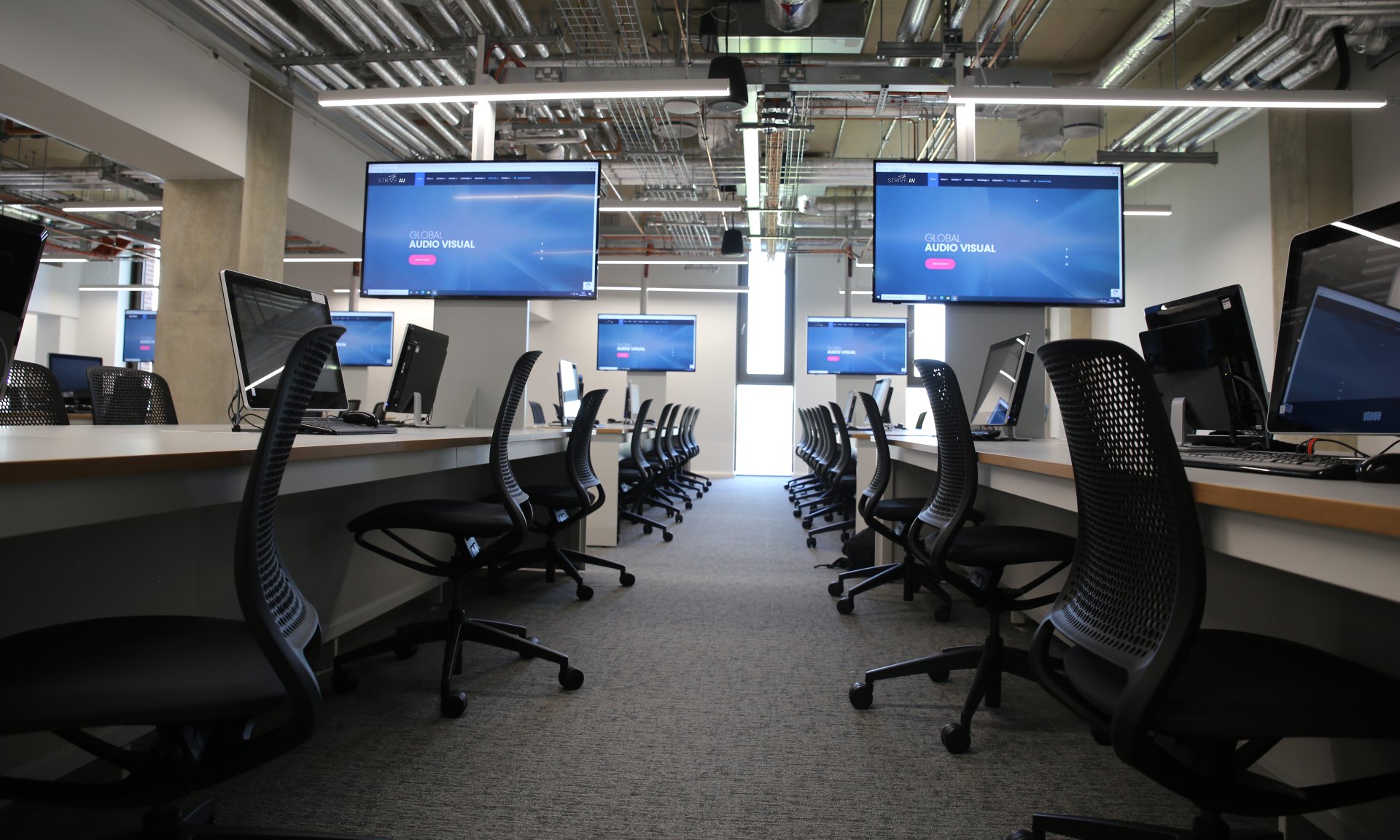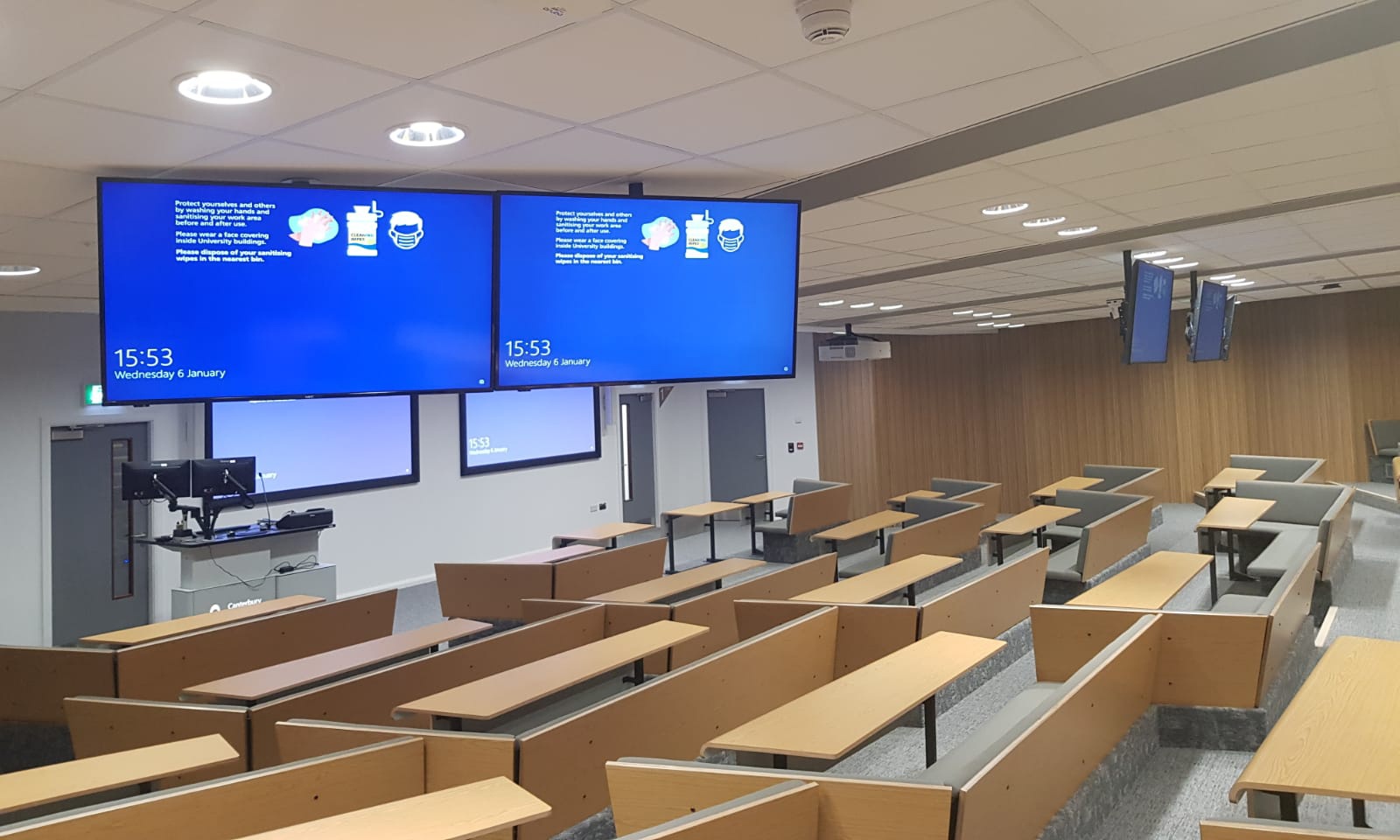Digital transformation trends in the classroom
With educational campuses navigating a period of intense digital transformation, Toni Chalk, Managing Director of Strive AV explores the key technologies that are weaving a thread through the education journey, from primary through to higher education.
The Wave of a New Era
From AV design and integration, through to on-going AV asset management, we have been working with education providers for many years. As an integrator, we’re often the link between education provider and technology manufacturer, putting us in a prime position to understand both the changing requirements of the education sector and the new technologies being developed to meet these demands.
The education technology sector has been on a rollercoaster ride over the past few years, largely due to the pandemic aka ‘the biggest experiment into distance-learning the world has ever seen’. The acceleration and adoption of new technologies in the classroom has been pedal to the metal, with education providers swiftly turning to tech to overcome the challenges of remote learning.
We’re also in the era of schooling a new generation of ‘digital natives’; children and young adults who are extremely familiar with interactive and immersive technologies, touch screen interfaces, and digital communication since birth.
With evolving expectations from students and teachers alike, coupled with the fast pace of digital transformation, the classroom / campus is progressing into a hub of connected technologies for learning and teaching. The squeaky old whiteboard is a nostalgic memory now, as interactive, engaging displays and collaboration tools take centre stage.
The Smart Classroom
At Strive AV, we’ve seen a huge uplift in the deployment of interactive displays in recent years, a piece of hardware that is now a key component of every classroom. The aim of interactive displays is to encourage engagement and active learning, making them a great choice for the classroom. In primary schools for example, interactive displays might be used for digital whiteboarding, presenting and connectivity for third party devices. The touch screen UI is ideal for little fingers to get involved in collaborative mark-making and selecting from the menu of applications.
For facilities and campus management, interactive displays offer a wealth of additional benefits. We work with 4k interactive displays including BenQ, Clevertouch, Promethean and SMART, that include features such as an on-board USB peripheral switch, the latest spec inbuilt Android operating system or optional Windows PC, and a remote management platform. The remote management allows a helpdesk agent or field technician to broker a virtual session with the display from anywhere in the world, install software and apply policy to one or all screens. The displays update their firmware over the cloud and come out of the box with an excellent system security, as well as ‘air-gap’ network connections to prevent unauthorised access to the campus network.
Some interactive display technologies have also taken AV signal transmission into the realm of the IT network. Software Defined Video over Ethernet (SDVoE) is the practice of treating an education campus as a matrix of sources and destinations, where any classroom can instantly send or receive uncompressed content from another classroom. The video is transmitted over the production LAN along with other traffic – true AV over IP.
In this way, any number of repeater screens can transmit or receive from any other, allowing students to quickly showcase a presentation and then switch back to the host display, for example.
Outside of the classroom, AV over IP can facilitate distance learning, lecture capture, create breakout spaces, live stream events and allows the helpdesk a live view of what is on-screen during a lecture, facilitating support.
Hybrid Tools for Higher Education
In higher education, collaboration tools are driving investment as hybrid learning looks to become the norm. Technologies that enable effective hybrid learning, such as UC solutions, PTZ (pan-tilt-zoom) cameras and in-room audio, are now being brought together into all-in-one solutions to provide continuity of experience for every student – no matter where they are located.
Educational campuses need to ensure that students can learn and engage from different locations. Providing BYOD connectivity to any device, enabling an unlimited number of users to collaborate by simultaneously sharing content, desktops and application windows – all considerations in a digital transformation strategy.
Collaboration technologies provide the flexibility to tailor how educators deliver courses and open up new possibilities for attracting a global student base, without logistical limitations.

Learning in glorious High-Res
As universities in particular move deeper into blended or hybrid learning, the change is reflected in their campus developments. Classrooms and lecture halls are being redesigned in favour of more collaborative spaces, some of which feature booths where students can interact. The ability to charge devices, either wirelessly or via USB is also in demand with charging points in seats and collaborative areas.
For a successful transition to hybrid learning, high performance AV must be at the core of physical learning spaces to enable the excellent delivery of content. High-resolution projectors and large-format displays, that show the minute detail of every image and piece of content, are now essential for ensuring all students – whether physical or remote - can interact and engage with the subject matter in the same way.
Interactive displays can play a useful role here. Most are touch enabled and jump into ‘ready mode’ with a simple tap saving unnecessary set-up time. They also integrate with the most popular video conferencing software apps, such as Zoom and Microsoft Teams, allowing educators and students to easily connect and share ideas with everyone in their study group, no matter where they are situated.
We’re seeing more and more strategic partnerships between collaboration software providers, further strengthening the professional tools available for hybrid learning. Platforms such as Blackboard are being integrated with video-conferencing tools such as Zoom, facilitating real-time annotation and group ideation to make the creative process even more productive for students.
The integration with legacy education apps also helps to streamline the roll-out and adoption process on campus.
Adoption and training
Pre-pandemic there was reluctancy from educators to be mic’d-up and on camera, but this changed dramatically as technology become the facilitator during lockdowns. For campuses that had already implemented digital transformation strategies, they could pretty much switch on remote learning overnight.
As the roll-out of hybrid learning policies and digital transformation strategies continues, educators are using technology to their advantage and enjoying a multi-faceted and flexible approach to teaching.
Education must seamlessly move between remote and in-person teaching, and investing the right technologies is paramount for this fluidity.
The Classroom of the Future
Looking to the future, campus-led education is becoming accessible to every student, wherever they are located. From providing support for students with impairments to integrating remote students, AV technology will play a key role in ensuring every student receives the same experience, be it the visual quality of content or level of interactivity.
As we move into a new era of learning, we’ll also see new realities – augmented (AR), mixed (MR), extended (XR) – playing a role in the transformation of the classroom, creating a digital canvas for vivid, more authentic learning experiences.
If you’d like to find out more about how we can support the digital transformation of your campus – whether you’re looking to upgrade your existing AV infrastructure or build a completely new one – get in touch for a free consultation. With decades of experience providing AV solutions for all kinds of teaching spaces, the team at Strive AV can advise on the latest and most effective tools, that will truly impact learning outcomes.

Strive AV’s new Buy Back Scheme for schools, colleges and universities, offers cashback for old classroom display equipment when upgrading facilities
Orders for interactive screens placed for delivery and installation before 31st December 2022 will have old equipment collected, within a maximum of 20 days. The more screens purchased, the more cashback is received, with no maximum limit.
If you’re considering an AV upgrade, here’s what Strive AV customers have to say:
“I have been using Strive AV [formerly CDEC) for over 10 years. They have provided me with an excellent service on every interaction. I will continue to use Strive AV to provide all of my audio-visual services. A great company, a great service, at great value.” Gary Jelks, School Business Leader
“Strive AV do exactly what they say they will do. We continue to utilise their skills, experience and vendor knowledge to help us deliver high quality, cost and time efficient projects, solutions and services to our MAT.” Mike Ward, Dean Trust
“Strive AV has deployed and maintained our AV since 2009. The service they provide has been exemplary and they always go the extra mile to achieve a successful outcome within very pressurised timeframes.” Paul Williamson, Director of I.C.T Operations - King Alfred Independent School
To find out more or to register your interest in the Strive AV Buy Back Scheme, visit www.striveav.com/buy-back




